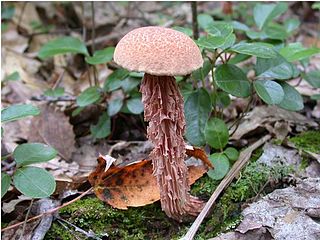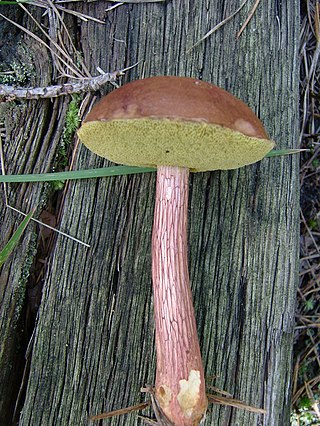April 13 is the 103rd day of the year in the Gregorian calendar; 262 days remain until the end of the year.
October 8 is the 281st day of the year in the Gregorian calendar; 84 days remain until the end of the year.
Robert Taylor is the name of:
Stephen, Steve, Stevie, or Steven Smith may refer to:
Sir Lennox Randal Francis Berkeley CBE was an English composer.

Fantasy Records is an American independent record label company founded by brothers Max and Sol Stanley Weiss in 1949. The early years of the company were dedicated to issuing recordings by jazz pianist Dave Brubeck, who was also one of its investors, but in more recent years the label has been known for its recordings of comedian Lenny Bruce, jazz pianist Vince Guaraldi, the last recordings made on the Wurlitzer organ in the San Francisco Fox Theatre before the theatre was demolished, organist Korla Pandit, the 1960s rock band Creedence Clearwater Revival, bandleader Woody Herman, and Disco/R&B singer Sylvester.

Xerocomus is a genus of poroid fungi related to Boletus. Many mycologists did not originally recognize the distinction between the two genera and placed Xerocomus taxa in genus Boletus. However, several molecular phylogenetic studies have demonstrated that Xerocomus is a heterogeneous genus of polyphyletic origin, which has resulted in further division of Xerocomus into Xerocomellus and Hemileccinum. The members of the genus Xerocomellus are more closely related to Boletus than true Xerocomus is, which is relatively distantly related to Boletus and more closely related to Phylloporus. Other former Xerocomus species have since been moved to Aureoboletus, Imleria, Hortiboletus and Rheubarbariboletus.
James, Jim, Jimmy or Jamie Robinson may refer to:

Xerocomus subtomentosus, commonly known as suede bolete, brown and yellow bolete , boring brown bolete or yellow-cracked bolete, is a species of bolete fungus in the family Boletaceae. The fungus was initially described by Carl Linnaeus in 1753 and known for many years as Boletus subtomentosus. It is edible, though not as highly regarded as other bolete mushrooms.

Boletellus is a genus of fungi in the family Boletaceae. The genus has a widespread distribution, especially in subtropical regions, and contains about 50 species. The genus was first described by American mycologist William Alphonso Murrill in 1909. The genus name means "small Boletus".

Boletellus obscurecoccineus, known as the rhubarb bolete, is a species of fungus in the family Boletaceae, found in Australia, New Guinea, Java, Borneo, Japan, Korea, and Taiwan. It is a distinctive and colourful bolete of the forest floor.

Aureoboletus mirabilis, commonly known as the admirable bolete, the bragger's bolete, and the velvet top, is an edible species of fungus in the Boletaceae mushroom family. The fruit body has several characteristics with which it may be identified: a dark reddish-brown cap; yellow to greenish-yellow pores on the undersurface of the cap; and a reddish-brown stem with long narrow reticulations. Aureoboletus mirabilis is found in coniferous forests along the Pacific Coast of North America, and in Asia. Unusual for boletes, A. mirabilis sometimes appears to fruit on the wood or woody debris of Hemlock trees, suggesting a saprobic lifestyle. Despite the occasional appearances to the contrary, Aureoboletus mirabilis is mycorrhizal, and forms a close association with the tree's roots.

Xerocomellus zelleri, commonly known as Zeller's bolete, is an edible species of mushroom in the family Boletaceae. First described scientifically by American mycologist William Alphonso Murrill in 1912, the species has been juggled by various authors to several genera, including Boletus, Boletellus, and Xerocomus. Found solely in western North America from British Columbia south to Mexico, the fruit bodies are distinguished by their dark reddish brown to nearly black caps with uneven surfaces, the yellow pores on the underside of the caps, and the red-streaked yellow stems. The fungus grows in summer and autumn on the ground, often in Douglas fir forests or on their margins. The development of the fruit bodies is gymnocarpic, meaning that the hymenium appears and develops to maturity in an exposed state, not enclosed by any protective membrane.

Boletellus ananas, commonly known as the pineapple bolete, is a mushroom in the family Boletaceae, and the type species of the genus Boletellus. It is distributed in southeastern North America, northeastern South America, Asia, and New Zealand, where it grows scattered or in groups on the ground, often at the base of oak and pine trees. The fruit body is characterized by the reddish-pink scales on the cap that are often found hanging from the edge. The pore surface on the underside of the cap is made of irregular or angular pores up to 2 mm wide that bruise a blue color. It is yellow when young but ages to a deep olive-brown color. Microscopically, B. ananas is distinguished by large spores with cross striae on the ridges and spirally encrusted hyphae in the marginal appendiculae and flesh of the stem. Previously known as Boletus ananas and Boletus coccinea, the species was given its current name by William Alphonso Murrill in 1909. Two varieties of Boletellus ananas have been described. Like many other boletes, this species is considered edible, but it is not recommended for consumption.

Boletellus singeri is a species of fungus in the family Boletaceae. It is known from Mexico, where it was collected from Sierra Nanchititla in the municipality of Tejupilco. The species is named after American mycologist Rolf Singer.

Aureoboletus russellii, commonly known as the Russell's bolete, or jagged-stemmed bolete, is a species of bolete fungus in the family Boletaceae. An edible species, it is found in Asia and eastern North America, where it grows in a mycorrhizal association with oak, hemlock, and pine trees. Fruit bodies of the fungus are characterized by their coarsely shaggy stem. The yellow-brown to reddish-brown caps are initially velvety, but become cracked into patches with age.
Boletellus fibuliger is a species of fungus in the family Boletaceae. Found in Venezuela, it was described as new to science in 1983 by mycologist Rolf Singer.

Boletellus emodensis, commonly known as the shaggy cap, is a species of fungus in the family Boletaceae. It was described by English mycologist Miles Joseph Berkeley in 1851 as Boletus emodensis, and transferred to Boletellus by Rolf Singer in 1942. Characterised by a distinctive reddish shaggy cap, it grows in eucalypt woodlands. It produces a brown spore print, and has fusiform (spindle-shaped) spores that are 16–20 by 7–9 μm with longitudinal grooves. It is similar in appearance to Boletellus ananiceps, but the latter species is scaly rather than shaggy, has a pinkish tint, and lacks grooves in the spores.

Aureoboletus projectellus is a species of bolete fungus in the family Boletaceae. Found in North America, and recently in Europe, it grows in a mycorrhizal association with pine trees.











